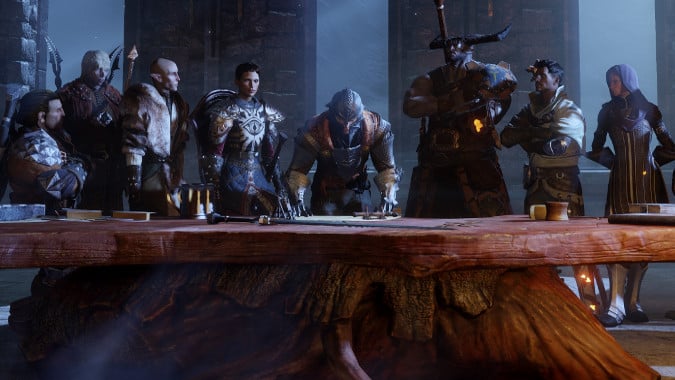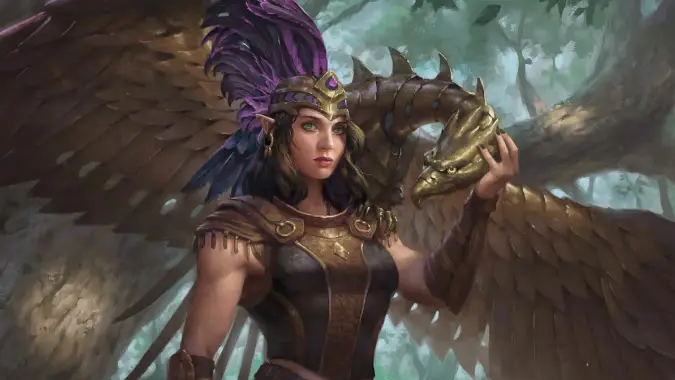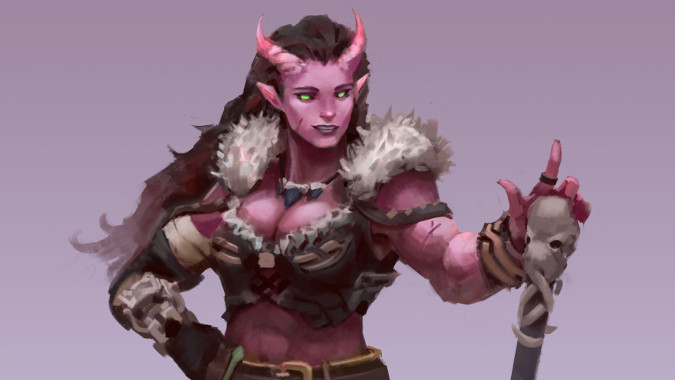How to run a single player D&D (or any tabletop RPG) session

I recently had an interesting experience that led me to a discovery I’m pretty happy with. See, my wife and I are quarantined together, which is as you’d expect.
But because of this, even if I were of the inclination to run a live D&D game in my house, nobody could come play. We’ve talked about playing and running games online, of course, and I’m actually involved in a couple of games online right now. But that’s not the same as running a game in person. So when my wife suggested I run a game for her, something I’ve done before, I agreed.
In the past I’ve done this to varying degrees of success. My wife’s an extremely good player, so I know she’ll do her best, but Dungeons and Dragons isn’t really designed to be played by a single player and a DM. Challenges are built on the assumption of a reasonably balanced party of characters, not one single PC doing their best. There are specific things you need to be willing to do to balance a session out for a single character.
But running a one-on-one game can still be a lot of fun, so if you want to try these are my tips on how to run your own one-on-one D&D session.

Be careful with the difficulty curve
A group of monsters that would be an even match for a party of four PC’s will shred a single player. Challenge ratings in D&D, that handy number that tells you how hard an encounter will be, are entirely predicated on having at least three or four players in a group. That doesn’t make it impossible to design successful encounters for a single player, but it does mean you need to really think carefully about what you’re going to present to your player and how you’ll challenge them.
One way around this is to let the player encounter smaller groups. Because it’s a one-on-one game, you don’t have to worry as much about making sure every player gets “screen time” to be cool and it’s okay if the player takes on groups of two or three at a time in smaller bursts of combat. Spend a little time planning out encounters and making sure you’ve thought of how the player can deal with those odds.

Consider focusing on non-combat challenges
Because this is a game with just two players, you as the DM can tailor the game more specifically. Instead of interactive storytelling with a group of players, you’re doing this one-on-one, so you can make design the game around specific things your player is capable of or interested in. For example. let’s assume your player is a Rogue with a heavy interest in investigation and trap disarming — you can remove some combat encounters and increase your emphasis on sneaky traps and clever puzzles for them to overcome.
You can also amp up the roleplaying. There’s nobody there to be embarrassed save the two of you. As long as you’re mindful of your player and their comfort, you can cut loose with elements of the story aimed directly at them. In a lot of ways, one on one D&D is tailor-made for that one player who really wants to explore a character and their inner life.
What makes Millicent the Rogue tick? A one-on-one session lets you finally explore Millicent’s difficult relationship with her mother, the Thieves’ Guild grandmaster, and also her somewhat unresolved kleptomania issue. That’s absolutely perfect for a one-on-one session.

Give your player a party
Before the game started, I created two NPC’s and added them to the campaign. My wife had access to their character sheets and assumed full control of them during combat, while I was the one in charge of what the NPC’s said and did out of combat. In essence, they were NPC party members — companions, much like you’ll see in many CRPG games like Dragon Age or Mass Effect or Baldur’s Gate. Heck, even Diablo 3 had the Templar, Enchantress, and Scoundrel. This is basically what I did for the most recent one on one session and it worked great, especially because my single player was on fire with the ideas for how those characters worked and who they were, and that led me to some inspired ideas that tied them into the whole session’s unfolding story.
In practical terms, what this meant for combat was that my wife was running several characters at once, deciding what they did — making it less like a typical session of D&D and more like a strategy game where each player controls a group. It meant I could run more difficult combat encounters without worrying as much because my player had access to a group to meet those challenges, and while it required my wife to keep track of more things I made sure to offer her more help than I would have if it was a traditional group players vs. a group of monsters.
It wasn’t perfect — a few times I heavily underestimated how much the party could handle, and the spell Tidal Wave did a crazy amount of damage to a Fire Elemental due to how the spell is worded and how Fire Elementals react to being submerged — but it did make for more complex combat and for some solid roleplaying. I learned to let my wife do more of the RP for the NPC party members because I knew I could trust her to play them as different characters from her PC.

One-on-one D&D offers more collaborative and improvisational play
If you have a player who is willing to take on more of a collaborative, almost co-GM role where they make decisions and are willing to embrace the interactive improvisational roleplaying element of the game, single-player D&D — or really, any game, it doesn’t have to be D&D — can be an extremely fun experience.
Running the game required a bit of work from me as the DM and a lot of trust between DM and player. But it worked really well, especially since we were using more improv rules than normal: I never said no to an RP element, but yes, and, rolling with anything the player came up with and making it work.
A one-on-one game has different demands on both the players, but that’s what makes it interesting. The sole PC has to do all of the work of the protagonist because there’s only one, and even if you compensate by adding NPC’s that the player controls in combat, they’re still at a disadvantage compared to a party that has many players, each of whom really know their characters. It’s just plain harder to know what more characters can do.
But a one-on-one D&D session also allows for more focus and a more tailored experience that hits those elements of gameplay the player is really interested in. If you’re both willing to do a bit more work it can be an extremely rewarding experience.
Originally published 8/4/2020. Updated 11/5/2020.
Please consider supporting our Patreon!
Join the Discussion
Blizzard Watch is a safe space for all readers. By leaving comments on this site you agree to follow our commenting and community guidelines.
 @MatthewWRossi
@MatthewWRossi




